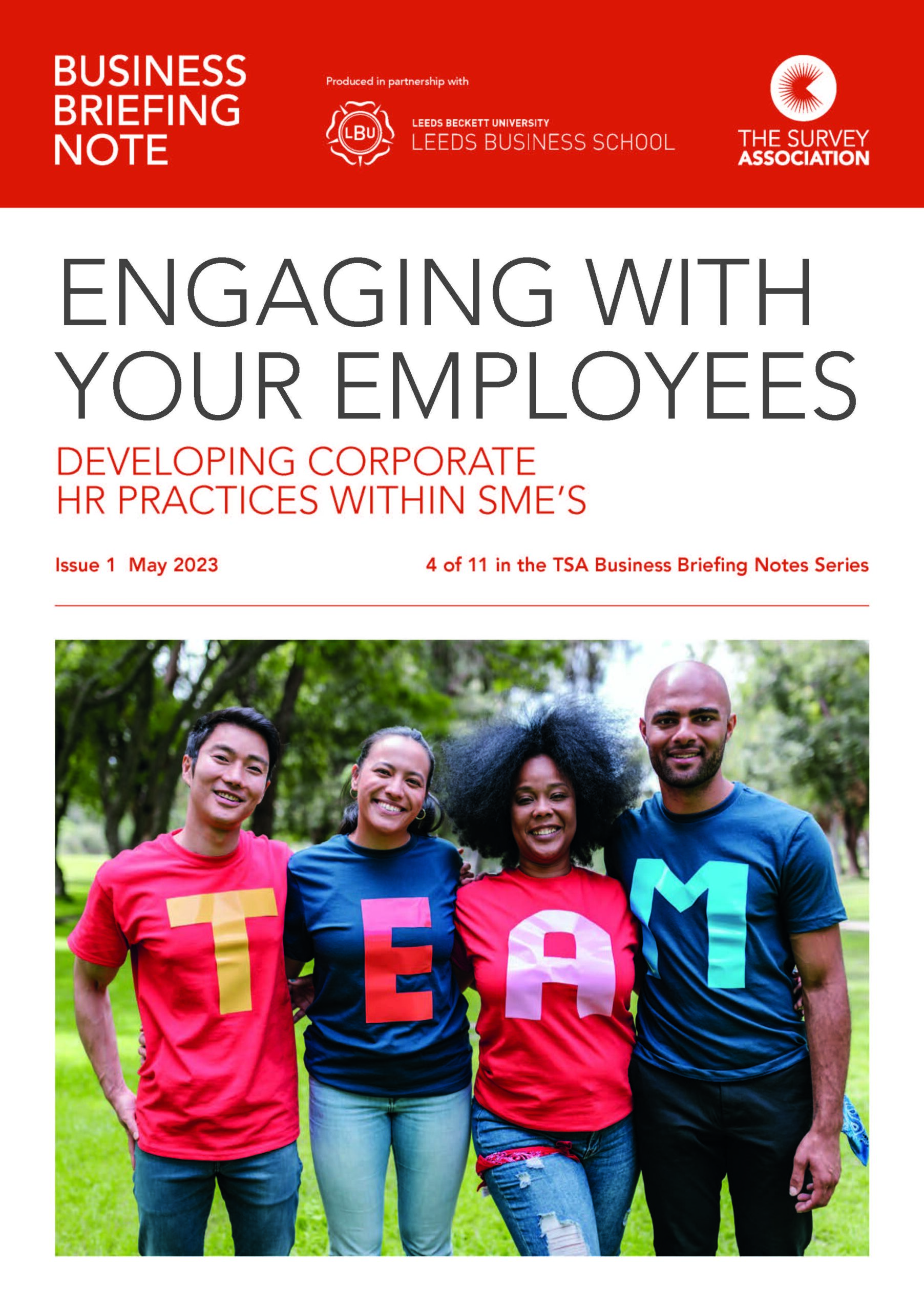Published: 25 May 2023
“Most SME’s have a strategic business plan for a variety of purposes, but adding an employee engagement arm to it will help in underpinning your business objectives”. Wise words from HR expert Ali Davies MA, PGCE, FCIPD, who has run her independent HR Consultancy, ADD HR Solutions for over ten years, providing support to SME’s. Ali has authored the latest in our series of Business Briefing notes, which focuses on employee engagement and is now available to download from our website for our members.
Called, ‘Engaging with your employees: developing corporate HR practices within SME’s’, the guidance focuses on how employee engagement can influence your relationship with customers, collaboration between employees and the subsequent effect on turnover and profits.
For anyone who is not quite sure what employee engagement means, that is hardly surprising. Apparently, there are over 50 definitions of employee engagement, a term which encompasses it as a measure of success, a cultural way of working or even a psychological state. In simple terms, employee engagement means a set of feelings an employee has about their work that makes them want to remain with that employer and do their best work possible.
Where to begin with employee engagement?
The best place to start with employee engagement is with measurement. As with so many instances of business management, you need to establish a baseline. Although you need to be careful not to bombard employees with feedback forms and surveys, a simple, well-designed and administered survey is a great way to establish which areas you need to work on.
Once you have the data from an employee survey, whether it’s one you have obtained online or designed yourself, you need to ensure you use it effectively. Ali recommends using a focus group to discover the key drivers of engagement. These vary, but usually the main drivers of engagement are:
- Visible empowering leadership
- Engaging managers with coaching skills who can recognise and reward individuals
- Having employee voice in the organisation
- Organisational integrity so the values are lived and breathed by all its members
Communication with your workforce is key in developing the employee voice, demonstrating strategic leadership and reinforcing your values.
With the current market seeing more vacancies than available candidates, SME’s are in a unique position to emphasise benefits to prospective employees, such as opportunities for career and personal development.
With examples of good practice, links to further resources to help you, including short video clips and articles, the full guidance is available to download from our website. One of our vision statements is to help members build a better business and to that end, you can find all the Business Briefings available so far to download here.

